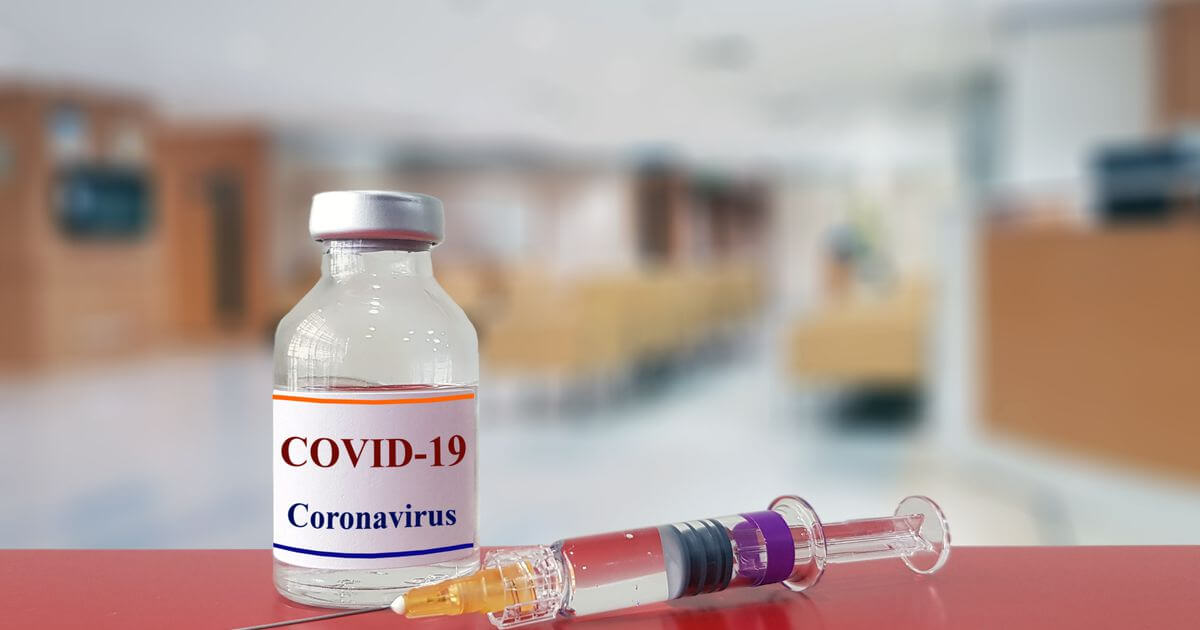How Blockchain Can Help with Vaccine Development Amid Coronavirus Pandemic
The need of the hour to combat the pandemic is a potent vaccine which needs to be available in a short span of time, yet developed by following rigorous regulatory procedures and in a trustworthy manner. How can technologies like Blockchain help in such an accelerated vaccine development process?


Today, irrespective of which country we are in, all of us are reeling under a new reality that has set in. A reality where each one of us has to fight an outbreak which recently has been deemed a pandemic by the World Health Organization (WHO). Novel coronavirus or COVID-19 is an infectious disease caused by a new virus first discovered in Wuhan, China, in December 2019. Since its initial outbreak, this virus has spread to more than 100 countries across the globe, and has affected many thousands of people, claiming lives of roughly 3 - 4% of those affected.
At the time of crisis such as this, technologies like AI, Machine Learning, Blockchain can be leveraged to assist the combat process. Technology companies are coming up with blockchain solutions for tracking virus spread, donations, insurance claims, medical supplies among others to combat coronavirus.
The need of the hour is a potent vaccine which regrettably at this time is not available. Researchers, biotech and pharmaceutical firms are racing against time to create the vaccine for this virus, as well as develop potential treatments for COVID-19. Generally, it takes years before a vaccine reaches mass production from its exploratory phase. Vaccine development crosses various stages starting from exploration to pre-clinical stage, clinical development, regulatory approval to production and distribution with continuous quality control & monitoring. However, at times when such pandemic is staring at the face, the utmost need would be to develop a formidable vaccine, distribute to the larger populace, cull this epidemic and immunize people from such infections at the earliest. This needs to be done in a short span of time, yet following rigorous regulatory procedures and in a trustworthy manner. How can technologies like Blockchain help in such an accelerated vaccine development process?
Exploratory phase
This is a research-intensive phase where antigen, a substance used to induce an immune response in the body is identified. Scientists usually isolate the virus to identify their genome sequence which is then used by biotech firms as a starting point to identify antigens. With hundreds of sequences being identified from scientists all over the world, Blockchain can serve as a collaboration mechanism for sharing timestamped, tamper-proof evidence of the genetic material which can be used to trace each sequence to its source when required.
Pre-clinical phase
This is the phase where the vaccine concept, a candidate vaccine is developed and efficacy of it is evaluated in test tubes and animals. Test results if available on Blockchain emphasize authenticity and provides a single shared source of truth for anyone in the world considering their next steps based on the vaccine efficacy. With Blockchain, multiple biotech and pharmaceutical firms, small or large, can collaborate and share their findings with each other without the fear of losing their IP rights or their competitive advantage, thereby working together towards getting the vaccine into the mainstream faster.
Clinical development phase
This is the phase where vaccines are tested on humans in multiple stages after the proposal to do so is approved by FDA or similar agencies. This is a crucial phase as the response of the human body, the adverse effects need to be recorded with due diligence and studied before the vaccine is approved for wider adoption. Clinical development is built on rigorous ethical principles which include informed consent from volunteers, with an emphasis on vaccine safety as well as its efficacy. Consent from the volunteers, if recorded on Blockchain in a pseudonymous manner without any personally identifiable information being disclosed respects their privacy and would encourage more people to join the process, people who had earlier hesitated because of privacy concerns. Blockchain can also be used to ensure the ethical enrollment of volunteers without any coercion.
The efficacy and the side effects of the vaccine tested among a large group of people can be tracked at each stage of clinical trials on Blockchain which serves as a potent proof for FDA & other agencies for approving or rejecting the license for the drug.
Regulatory review & approval phase
FDA can be a participant of the network of biotech firms, pharmaceutical companies, actively monitoring the clinical trials and use this information in the approval process.
Mass Production & Distribution phase
Recording the manufacturing process on immutable ledger such as Blockchain will ensure faster standards verification as there are less paperwork and no siloed information. Facilities can collaborate with each other to streamline manufacturing and distribution processes. Tracking the shipment of these drugs and recording the process on Blockchain will help tackle the counterfeits problem.
Quality Control phase
Various healthcare professionals and service providers accessing this vaccine can use Blockchain to record the performance and effectiveness of the vaccine which can be used by multiple stakeholders in this ecosystem to get a first-hand, real-time view of vaccine efficacy.
At these unforeseen difficult times, it is necessary for everyone to contribute in any capacity to combat this pandemic. Technological advances of today are quite capable of being utilized in accelerating the defense. Blockchain might not be the solution to all the problems of the world but can be thoughtfully leveraged to alleviate some.
Image via PixabayImage source: Shutterstock


.jpg)

